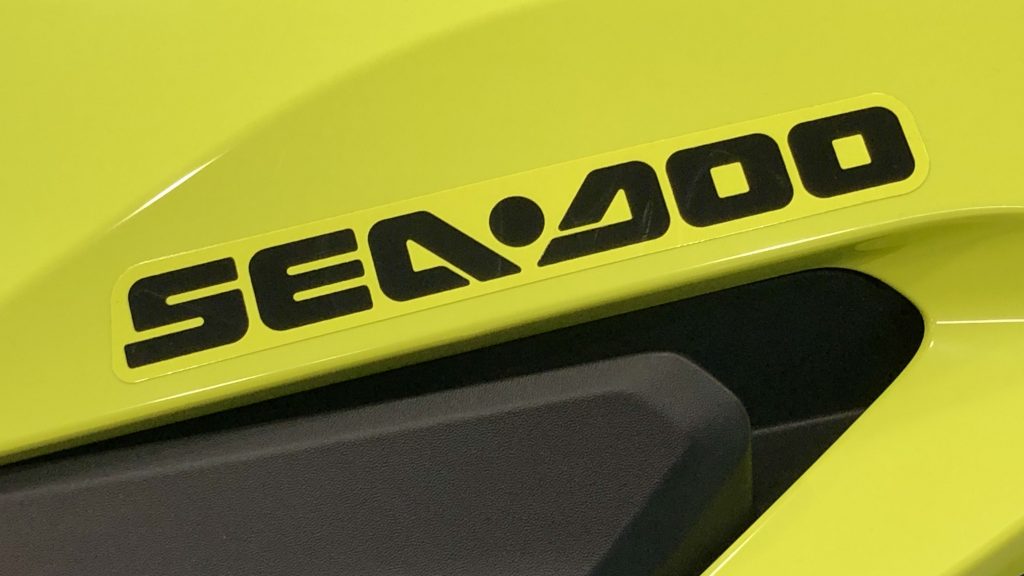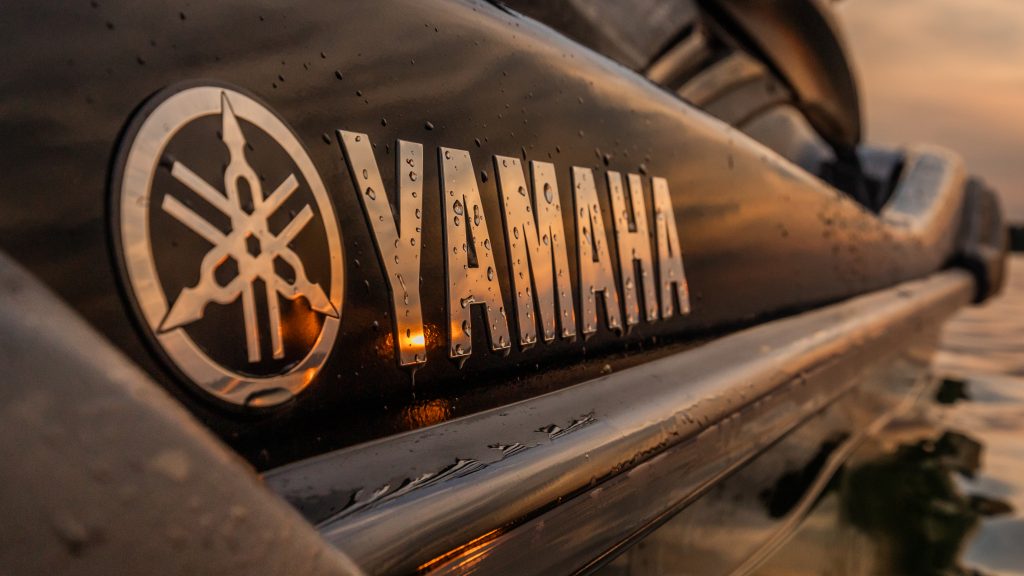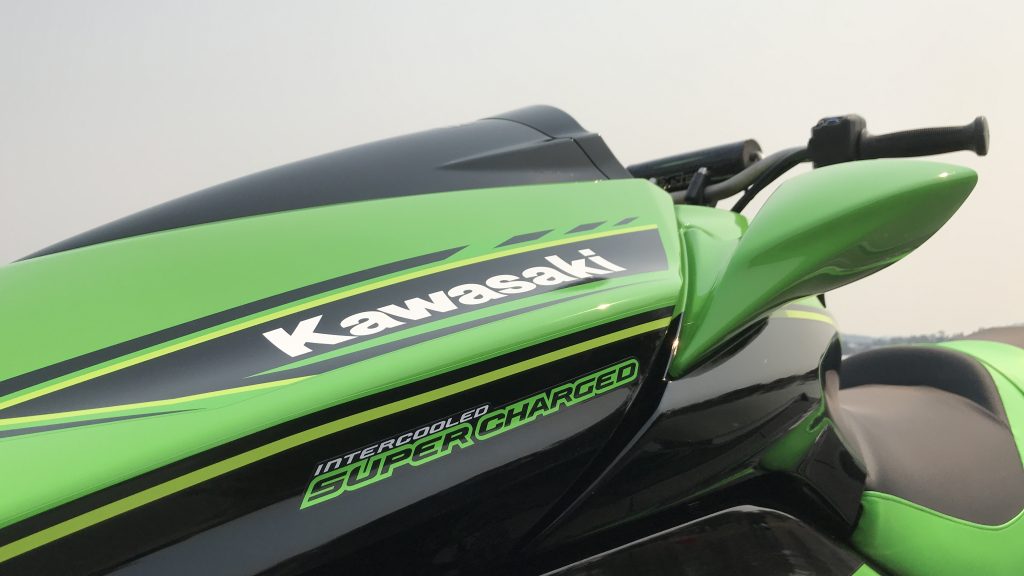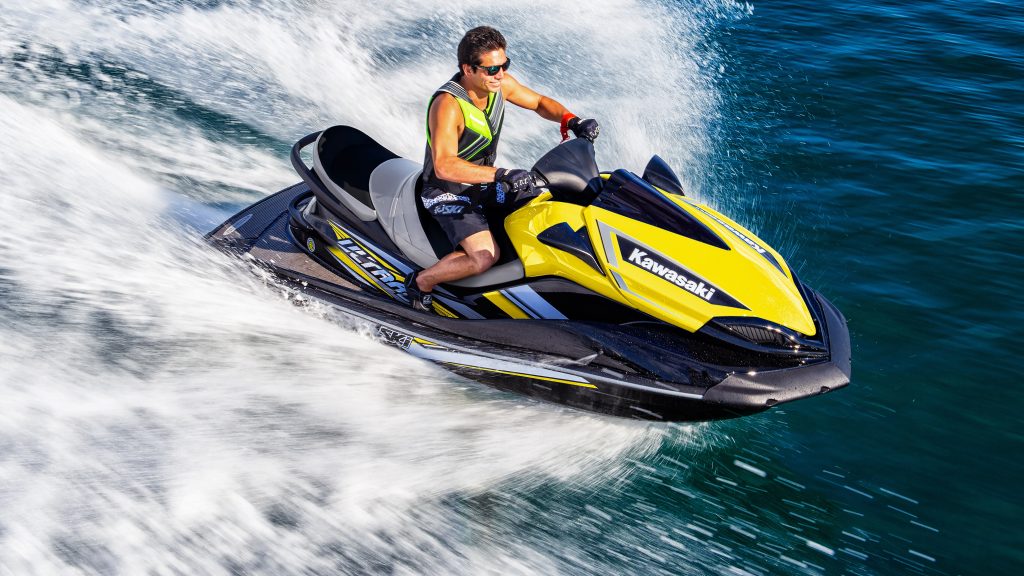The world of Jet Skis and personal watercraft can seem daunting for those who are new to the sport.
Sales representatives for – and owners of – each watercraft brand will tell you theirs is the best.
However, it’s worth noting that, in general terms, all three mainstream watercraft brands have plenty of good points – and room for improvement.
The good news is each Jet Ski or personal watercraft brand generally has excellent reliability – as long as they are properly maintained according to their individual service schedule.
As with cars, sometimes things can go wrong. However, niggling issues are usually fixed as a running change, during routine maintenance, or before the watercraft is delivered.
So while you may hear horror stories about various brands, it’s worth asking yourself if that particular Jet Ski or personal watercraft was properly maintained – or was it abused or neglected, or not serviced correctly?
The reality is all three mainstream brands – Sea-Doo, Yamaha and Kawasaki – have advantages and disadvantages over their rivals.
In general terms, Sea-Doo watercraft have enviable user-friendly ergonomics and efficient engines, Yamaha Waverunners have above average handling in rough water and intuitive handling in flat water and medium chop, and Kawasaki has heavy duty, durable hull designs.
As this article was published, the standard factory warranties in Australia across all three brands varied: Sea-Doo (two years), Yamaha (three years) and Kawasaki (five years). These terms can change during special promotional periods, so be sure to check.
However, the warranties are only as good as the condition and routine maintenance of each Jet Ski or personal watercraft.
While you are not compelled to service within the dealer network – and many owners service watercraft themselves or use independent mechanics – there are advantages of having a certified dealer perform routine maintenance.
Authorised dealers are notified of any updates, running changes, part number changes, and warranty issues for each watercraft.
While there are some excellent independent mechanics, details on running changes or recalls are not immediately conveyed to technicians outside the dealer network.
There is also the advantage of selling your Jet Ski or personal watercraft with a log book with dealer service stamps. It gives the next owner peace of mind, and hopefully makes your craft more appealing to would-be buyers than a machine that has not had proper maintenance.
With all this in mind, we have listed some of the known issues that have been flagged – and addressed – with the recent crop of Sea-Doo, Yamaha WaveRunner and Kawasaki Jet Ski models.
We have sought to cut through some of the misinformation – and consulted experts in the field to cover-off some of the issues that have been identified with each of the mainstream brands.
It’s worth noting, these are worse-case scenarios – and not indicative of every Jet Ski or personal watercraft sold by each brand.
Please do not let this information discourage you from purchasing a Jet Ski or personal watercraft. We are merely trying to identify some of the issues that have affected each brand in the recent past. In most cases, the issues have been addressed.
This information is based on the experience of technicians who service and pre-deliver hundreds of Jet Skis and personal watercraft across all three brands each year.

Sea-Doo
Sea-Doo watercraft have excellent ergonomics and design. Their user-friendliness and general functionality are the envy of the industry.
Some common complaints include concerns about carbon seals which, if worn prematurely, can cause the hull to take on water.
However, the issue is not as widespread as you may be led to believe. Proper maintenance will minimise the risk of a fault developing.
Sea-Doo has used carbon seals on its flagship models since the late 1990s.
A carbon seal is a small, chamfered ring (similar in size and shape to the bottom of a soft drink can) made out of a carbon-graphite composite material that fits around the driveshaft.
It presses tightly against a metal ring (shaped like a top hat) to ensure the craft doesn’t take on water via the small opening in the hull the driveshaft pokes through.
Because the driveshaft extends from the engine and through to the jet pump impeller on the underside of the hull through a small hole, the carbon seal is designed to provide a water-tight seal and prevents water from entering the engine compartment. It relies on friction to keep the water out.
When a craft is well maintained, the carbon seal should never be a concern.
However, it’s worth noting a carbon seal is a serviceable item, much like brake pads on a car.
A carbon seal can wear prematurely if the driveshaft becomes out of alignment (such as due to engine mount failure as a result of rider abuse or severe wave jumping), or if the engine runs for an extended period of time while the craft is out of the water.
This is why Sea-Doo advises to flush its watercraft for a maximum of 90 seconds to two minutes. Running the engine for longer than this while the craft is out of the water can damage the carbon seal if it gets too hot. When that happens, the seal is no longer water-tight and the craft can start to slowly take on water.
Yamaha and Kawasaki instead use two-piece driveshafts connected via a rubber coupler inside the engine compartment. The first half of the driveshaft is connected to the engine and links (via the coupler) to the second half of the driveshaft, which pokes out of the engine compartment and drives the jet pump impeller.
The engine compartments on Yamaha and Kawasaki watercraft are kept water-tight by a double-lip seal that goes around the driveshaft in a hole in the “firewall” (the structure between the engine bay and the underside of the craft).
Some Sea-Doo specialists recommend changing the carbon seal every 100 hours, although this is rare and replacement at this stage could be caused by premature wear and tear.
Sea-Doo experts we spoke to said the carbon seal should be inspected at each routine service – and checked for excessive wear or wobble on the support ring.
Our experts say a Sea-Doo carbon seal is more likely to be replaced every four years or so – as a preventative measure – if it is wearing at a normal rate and the watercraft has not been abused.
Proper maintenance – and thorough checks during routine servicing – will help ensure you’re not stranded during a day on the water.
Most carbon seal malfunctions can be traced to incorrect maintenance – such as owners flushing their watercraft for too long when it is out of the water (the carbon seal gets too hot and wears prematurely, creating a gap for water to seep through).
There was briefly a batch of carbon seals produced in 2019 that weren’t made to original manufacturer specifications. The supplier of the carbon seal changed, and switched to a new material, and this led to premature wear and – eventually – slow leaks.
It transpired the material was too soft, and Australian customers were first to experience the issue – because the first batch of watercraft with the new carbon seal was sent to Australia. This is where many of the rumours stem from.
However, Sea-Doo dealers in Australia flagged the issue with BRP head office, and Sea-Doo immediately reverted to the original supplier.
This is now regarded as a non-issue by Sea-Doo, as all potentially affected watercraft had their carbon seals replaced, in many cases before customers took delivery.
Broken engine mounts can also lead to premature carbon seal wear. Yamaha and Kawasaki watercraft have four engine mounts; most Sea-Doo models have three engine mounts, one of which can break after severe wave jumping.
When an engine mount breaks, it may not be obvious to the rider, but the carbon seal can start to wear prematurely as the driveshaft is not properly aligned.
Sea-Doo has since switched to a new, larger carbon seal ‘hat’ (or ‘floating’ metal ring), which means it takes longer for the carbon seal to reach its overheating point.
However, Sea-Doo experts say it’s imperative the correct part is used for each model. The part numbers sometimes have a difference of only one digit – but one will fit perfectly and one won’t.
Sea-Doo experts say if the driveshaft is not aligned properly, it can start to grate on the seal and create dust, which acts like sandpaper and accelerates wear.
Sea-Doo experts say the driveshaft must be perfectly aligned – left and right, up and down, backwards and forwards.
Over time, the engine mounts can slip forward – even by just a few millimetres – and that can reduce the water-tight pressure on the carbon seal.
Rather than a carbon seal, Sea-Doo Spark and Spark Trixx models made from 2014 to 2020 have a rubber seal (as per Yamaha and Kawasaki), and a splined driveshaft goes straight into the back of the engine.
The Sea-Doo Spark and Spark Trixx made from 2014 to 2020 use a rubber seal (rather than a carbon seal) because the smaller and lighter engine doesn’t move around as much under acceleration as the more powerful Sea-Doo engines.
It is worth noting Sea-Doo equipped the 2021 Spark Trixx with a carbon seal so the driveshaft splines remain lubricated, avoiding corrosion in that area.
Interestingly the Sea-Doo Spark and Spark Trixx have four engine mounts, which also assist with stability around the rubber or carbon seals.
Whichever Sea-Doo you own, experts say it’s important to get into the habit of not flushing Sea-Doo watercraft for too long when they’re out of the water.
Late model Sea-Doos have a warning label near the hose fitting, advising owners not to flush the watercraft for longer than two minutes
For more detailed advice on flushing, please see our guide here.
Sea-Doo’s closed loop cooling system means there’s coolant recirculating through the veins in the ride plate, using the water under the craft to help cool the engine when running at speed – without salt water or fresh water entering the engine.
In essence the ride plate acts as a radiator. There are unsubstantiated reports of ride plate corrosion, however Sea-Doo experts we contacted say they have not seen any examples of this, and suspect it’s a scare tactic to discredit Sea-Doo’s closed loop cooling system (Yamaha and Kawasaki use open loop cooling systems, using the fresh water or salt water you’re riding in to cool the engine).
In early 2021, Sea-Doo introduced a debris removal system known as IDF (intelligent debris-free) on certain models which was, in effect, a “reverse thrust” system to clear debris such as plastic bags from in the intake grate.
A number of Sea-Doo watercraft equipped with this tech – part of the initial batch sold globally in early 2021 – experienced failures which left them stranded without forward or reverse power within the first few hours of operation.
However, Sea-Doo says the fault only affected a small number of watercraft with IDF and it has made significant hardware changes to address the issues. Read about the running changes to Sea-Doo’s IDF tech in detail here.
Another concern around certain Sea-Doo models is their Polytec (or plastic) hulls. Critics say this material is more difficult to repair than fibreglass (Yamaha and Kawasaki), and colours are harder to match when a repair has been made.
However, Sea-Doo experts insist this is not the case. They say the Polytech 2 hull on the 2020 Sea-Doo GTI and GTR models, for example, have thicker hull sections and reinforced fibreglass sections in key areas, to ensure strength and torsional rigidity so the hull maintains its shape when cornering and in chop.
Sea-Doo experts say repairs to Polytech 2 hulls are much easier than repairs to fibreglass hulls. “They can withstand severe punishment from being dragged up the sand when beached,” said one Sea-Doo expert.
However, experience with surf life-savers has shown that fibreglass hulls have the most resilience to “beaching”, ahead of Sea-Doo’s Polytec material and Yamaha’s NanoXcel, which is the most vulnerable in such scenarios and ideally should not be beached.
One Sea-Doo expert claimed it is quicker to repair a Polytec hull than a fibreglass hull.
“If you brought your damaged (Polytec hull) to me, we could repair it in-house and have it out the door in a day or so,” said another Sea-Doo expert.
“We weld them with the exact same material that they are made from, so the colour match is the same, apart from sun aging. A fibreglass (Jet Ski or personal watercraft) would be in the shop for three to four weeks.”
The Sea-Doo expert said: “The reality is, Polytech is lighter, more resilient, provides a better power-to-weight ratio and therefore better fuel economy. They have been making car parts out of this material since the 1980s.”
However, the Sea-Doo expert did acknowledge: “Fibreglass has a better finish, looks more premium and can be painted to match any colour.”
It is advisable not to operate any type of personal watercraft in a water depth of less than knee height, even when idling near the shore.
At speed, it is best to have at least three-feet – close to 1 metre – of water depth as an absolute minimum.
However, in our experience, Sea-Doo watercraft are more vulnerable to damage from sucking up sediment in shallow water, which can damage the plastic wear ring.
Yamaha WaveRunners and Kawasaki Jet Skis don’t have a wear ring. Instead, on those watercraft, the impeller has a touch more clearance between it and the impeller housing.
Kawasaki Jet Skis have a stainless steel liner inside the jet pump housing, but the liner can’t be replaced. Experts say a whole new jet pump housing is eventually required after two or three impellers have been replaced over an extended period of time.
Because of this slightly extra clearance – compared to Sea-Doo – Yamaha and Kawasaki watercraft tend to cope a little better in shallow water, however they risk damaging the impeller instead, which can be a more costly repair.
The slightly larger gap between the impeller and impeller housing (compared to the tighter clearance between the metal impeller and plastic wear ring on Sea-Doo watercraft) means Yamaha WaveRunners and Kawasaki Jet Skis tend to ‘cavitate’, or struggle with intermittent ‘thrust’ when accelerating rapidly from a standing start.
Sea-Doos tend to accelerate more quickly and more smoothly from a standing start because of the minimal – almost zero – gap between the metal impeller and plastic wear ring.
Sea-Doo chose to install a plastic wear ring because it tends to take the brunt of the damage from any sediment sucked up in shallow water – rather than damaging the impeller.
As with the carbon seal, a Sea-Doo plastic wear ring is a serviceable item.
Some aftermarket suppliers offer metal wear ring replacements, however Sea-Doo does not recommend this because it could instead lead to impeller damage.
To sum up: avoid shallow water in any personal watercraft, and especially in a Sea-Doo.
If you damage a Sea-Doo wear ring, you will notice the ski has intermittent ‘thrust’ and won’t accelerate as smoothly from low speeds. But once up to speed, it should easily maintain momentum unless the damage is severe.
You won’t do any further damage to a wear ring by continuing to ride the craft – providing the water is deep enough and clean enough – but it’s best to get it replaced as soon as possible.
Finally, it’s worth keeping an eye on the plastic notches on the adjustable handlebars of ST3-based Sea-Doo models (such as the Sea-Doo Fish Pro, RXT-X RS300, and GTX Limited).
Because the height adjustment is locked in position via plastic steps or notches, the settings can slip after hitting a big wave, and lock the handlebars into the highest or lowest position.
It’s difficult to rectify on the water, but it’s a quick fix at a Sea-Doo dealer who has the right tools to reset the handlebars.
Apparently Sea-Doo has no plans to move away from this plastic design. Yamaha and Kawasaki models with adjustable handlebars have stronger metal notches, which are not prone to slip out of position.

Yamaha
Although the most affordable Yamaha WaveRunner models use a heavy-duty fibreglass hull known as SMC (sheet moulded compound), a number of mid-range and top-end Yamahas from 2008 to 2021 used a lighter hull material dubbed NanoXcel (from 2008) or NanoXcel II (from 2015), a form of lightweight sandwiched fibreglass.
Owners have reported subtle hairline cracks in the hull surface and, in extreme cases, delamination (where the paint peels away to expose the bare fibre-like material underneath).
Yamaha made running changes in an attempt to make its hull material more robust, but in our experience WaveRunners equipped with NanoXcel I or NanoXcel II hulls are more susceptible to damage – compared to other watercraft on the market – when used in open-water conditions, and if they have been “beached”.
Tiny scratches in the hull can lead to bigger cracks. Our advice is to not beach any watercraft, regardless of brand. You can read about anchor options here.
To properly address hull cracking and delamination issues, from 2022 onwards the full-size Yamaha FX HO and Yamaha FX SVHO made a welcome return to heavy-duty SMC fibreglass hull material.
However the top deck of the 2022 Yamaha FX HO is still made from NanoXcel 1 material, and the top deck of the 2022 Yamaha FX SVHO is still made from NanoXcel II material.
From 2022, only the high-performance Yamaha GP1800R SVHO and Yamaha JetBlaster models continue with NanoXcel.
Prior to the return to heavy-duty SMC fibreglass hull material, a number of known cases of Yamaha NanoXcel cracks occurred after 50 or 100 hours of ocean riding, in the hands of experienced operators.
Yamaha was known to initially make repairs under warranty and, in some cases, it replaced watercraft under Australian Consumer Law.
However, this is only after thorough investigation, and proof there was no mis-use or premature wear caused by “beaching” a ski or inadvertently damaging the hull on debris.
There is some concern in the industry around the repair methods of Yamaha’s NanoXcel 1 and NanoXcel II material, which could affect insurance premiums and insurance claims – because some craft may get written-off rather than repaired.
If you’re wondering why surf life-savers are able to beach their Jet Skis and personal watercraft, that’s because in most cases they have been fitted with a thick, adhesive hull protector along the spine.
This can protect the hull to a certain extent, but it also affects handling and high-speed performance, which is why it is used mostly on surf life-saving watercraft rather than leisure craft.
In our experience, it is advisable to not “beach” a WaveRunner equipped with a Yamaha NanoXcel and NanoXcel II hull. Also take care to avoid debris – and avoid riding the craft onto the trailer, which can start hairline fractures that can get worse over time.
Yamaha FX HO and SVHO models from 2019 onwards have fuel gauge accuracy issues – and low-fuel warning buzzers that activate too early.
Yamaha initially replaced fuel sender units and/or digital instrument displays to address these concerns. From late 2020, Yamaha issued a ‘version two’ software update which is uploaded into digital instrument displays.
Helpfully, FX HO and SVHO models from 2019, 2020, and 2021 have a highly accurate fuel-used (by the litre) gauge.
Providing you top-up the tank and reset this gauge before each trip, you’ll know exactly how much fuel you have used – and can then calculate what’s left in the 70-litre tank.
However, Yamaha switched to a new touchscreen on the 2022, 2023 and 2024 versions of the Yamaha FX HO and SVHO – and the fuel-use mode resets whenever the engine is shut off (rather than manually pressing a button).
This glitch means it is harder to track your fuel use on a long day out on the water. Here’s hoping Yamaha comes up with a fix soon.
The 2019 to 2021 model-year versions of the Yamaha FX HO and SVHO can be painfully slow to refuel, since Yamaha relocated the fuel filler to the nose. A fuel pressure valve (in essence, a plastic tube) inside the fuel filler neck stops fuel from overflowing or “burping” when refuelling.
Some owners remove this part, which enables quicker refuelling. However, without the plastic “anti-burping” tube, you need to be careful to undo the fuel filler cap slowly to release the built-up air pressure gradually.
For later models of the Yamaha FX HO and FX SVHO, Yamaha installed a new “anti-burping” tube near the top of the fuel filler neck, which has largely alleviated slow refuelling issues.
A number of owners of the 2019 to 2023 Yamaha FX HO (1.8-litre four-cylinder) have experienced fuel injector wire failures or fuel injector connector failures, usually after 50 to 70 hours of operation.
One of the four injector wires or connectors snaps, separates, or loses contact, and the engine will then only run on three cylinders. It won’t necessarily leave you stranded, but you won’t be able to proceed at full speed.
In some instances, riding the watercraft in this condition – on three cylinders – for an extended period to return to a boat ramp, can damage the engine management computer.
Sea-Doo mitigates the fuel injector wire separation issue by giving each lead enough wriggle room – and then securing each one with a cable tie so it doesn’t separate due to vibrate or fray near the connector.
Yamaha also ties or clamps excess fuel injector wiring, but some experts wonder if Yamaha needs to give the injector leads even more “wriggle room” – or if Yamaha needs to adopt a better quality connector, that can handle the repeated movement of a watercraft in rough conditions.
If the watercraft is under warranty, both the entire fuel injector wiring loom (or harness) and engine management computer should be replaced free of charge, however there could be parts delays.
It’s worth noting this issue is rare and seems to be exclusive to those who do extended ocean riding in rough conditions.
A replacement fuel injector wiring loom (or harness) costs about $2800, however Yamaha is aware of this issue and this component is usually replaced under warranty, providing there are no signs of abuse, the watercraft is in standard condition, and has undergone routine maintenance according to the logbook.
The fuel injector wire/connector issue affects both the current generation FX HO 1.8-litre non-supercharged engine, and the same engine in later versions of the previous generation FX (from 2012 onwards).

Kawasaki
Kawasaki Jet Skis are known for having the strongest hulls in the business because they are still made using old-school fibreglass, which makes them heavier than their rivals but more durable and easier to repair.
The hull design of the Ultra has not changed since 2007, when the Ultra LX was introduced. Although the top deck for the STX160 was all-new for 2020, its hull has not changed since 2003, when it debuted on the STX-12F.
As the saying goes, if it aint broke, don’t fix it. The most common feedback about the current range of Kawasaki Jet Skis is the operation of the large reverse lever on the left of the centre console, rather than the more intuitive reverse triggers on the left handlebar of Sea-Doo and Yamaha models (on the opposite side to the accelerator trigger).
Sea-Doo introduced handlebar reverse triggers in 2010 and applied it to most models in 2011. Yamaha applied handlebar reverse triggers to most models from 2015.
There is conjecture over who invented left handlebar reverse triggers for personal watercraft. Kawasaki experts claim Kawasaki designed a left handlebar reverse trigger before Sea-Doo or Yamaha, however others patented it first.
Kawasaki experts claim Kawasaki is developing a right handlebar reverse trigger – under the throttle trigger – which is “thumb activated”. If the system goes into production, it means the craft can be manoeuvred with one hand. Kawasaki experts claim the right-hand reverse and accelerator trigger set-up is still in development.
Having tested all three types of reverse system, the Yamaha is the most intuitive because you can activate it with one hand only, whereas the Sea-Doo needs the throttle trigger to be applied at the same time, to make the reverse trigger work with decent power.
The Kawasaki’s existing reverse lever system is more cumbersome and requires more patience (and more skill) in low-speed manoeuvring.
Other Kawasaki notes: there have been numerous updates to the supercharged 1.5-litre four-cylinder used in the Ultra 310 introduced in 2014 – and in its previous guises including the Ultra 250 (2007-2008) Ultra 260 (2009 to 2011), and Ultra 300 (from 2011 in the US and from 2012 to 2013 in Australia).
Over time, Kawasaki has strengthened key internal components, such as the crank, cylinders, and head – and fitted a new Eaton twin vortices (TVS) supercharger that uses Kawasaki’s own adaptor (with an Eaton body), and a stronger timing chain (since the Ultra 300).
While the latest Kawasaki supercharger is a TVS type, the Ultra 250 and Ultra 260 had an old-school twin-screw type supercharger, which sounded awesome but took a lot of power to drive it. The new supercharger provides two litres of air per revolution.
The supercharged 1.5-litre engine from the Kawasaki Ultra 300 onwards is a completely new motor, although from the outside it looks similar. Kawasaki experts say no major part from a 250 exists on an Ultra 300 or the current Ultra 310. However, the oil pumps on supercharged and non-supercharged Kawasaki Jet Skis have not changed since 2004.
The most significant changes to the Ultra 310 engine have been new pistons with slipperier rings. The cylinders were changed to improve cooling and oil flow – and a knock sensor was added. Kawasaki experts say the Ultra 300 pistons are stronger, and Ultra 310 rings fit.
Kawasaki specialists say this goes some way to explaining why there were ringland failures on early Ultra 310 models. However, experts say Kawasaki often replaces these even out of warranty – as long as the watercraft has been well maintained (serviced every 25 hours or annually, with muffler filters replaced as scheduled, as per the log book) and is in good condition.
Owners who service their watercraft themselves – or via an independent mechanic – may have difficulty in proving correct parts and oils were used for routine maintenance.
For now, Kawasaki continues to make running improvements to its Ultra 310 engine – the most powerful in the personal watercraft market as this article was published – rather than undertake a complete redesign.

Summary
It’s worth noting that it is not up to the dealer to decide if a repair is covered under warranty. With all three brands – Sea-Doo, Yamaha and Kawasaki – the dealer must apply to the manufacturer for a warranty claim, on the customer’s behalf.
If the watercraft has been well maintained and not abused, it’s more likely that known issues will be covered under warranty, even if you’re just outside the warranty period.
If the Jet Ski or personal watercraft has not been correctly maintained, repairs could be costly.
As the insight listed for all three brands above shows, no-one makes the perfect Jet Ski or personal watercraft – but it’s helpful to know some of the background behind the rumours.
Please keep in mind the above examples are not indicative of most Jet Skis or personal watercraft – and are rare worse-case scenarios for each brand.
Each brand has its own strengths; it’s a matter of which watercraft feels right for you – depending on your needs.
The key message for whichever brand of watercraft you buy: proper maintenance by experts in the business – and who specialise in your particular brand of ski – are crucial to a trouble-free day on the water.
Footnote: This article was originally published in 2021 but is regularly updated as new information becomes available.
Let us know if you have any tips or feedback: info@watercraftzone.com.au
MORE: All our Sea-Doo coverage in one click
MORE: 2021 Sea-Doo prices
MORE: All our Yamaha coverage in one click
MORE: 2021 Yamaha WaveRunner prices
MORE: All our Kawasaki coverage in one click
MORE: 2021 Kawasaki Jet Ski prices



